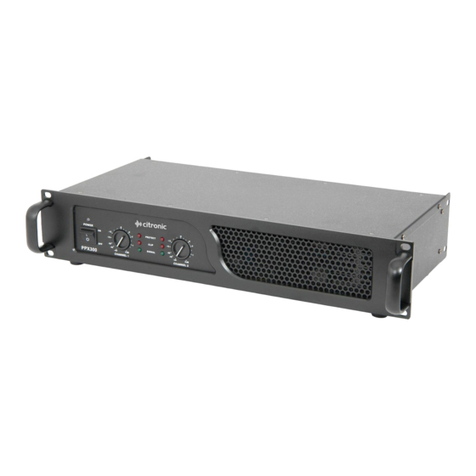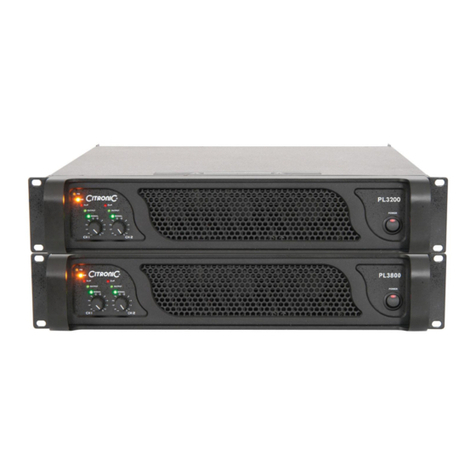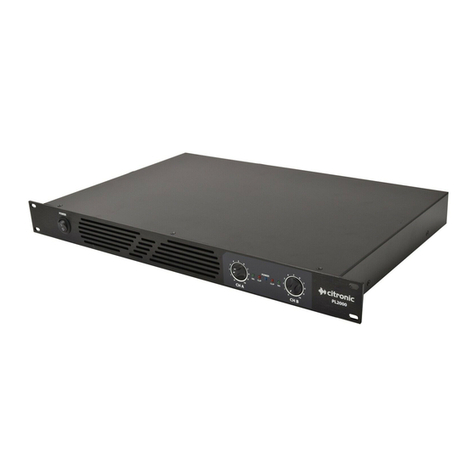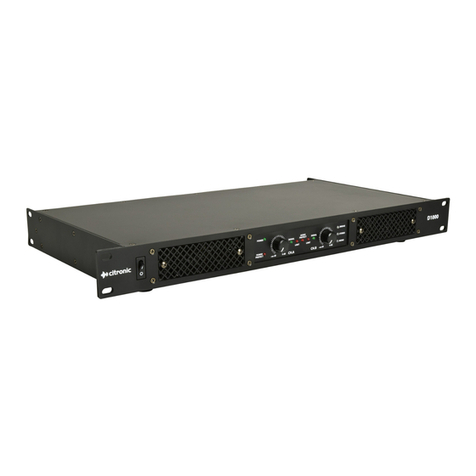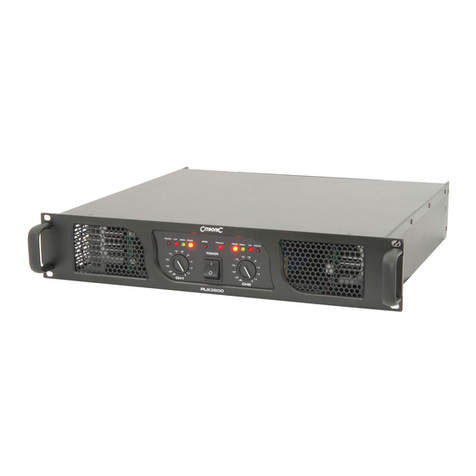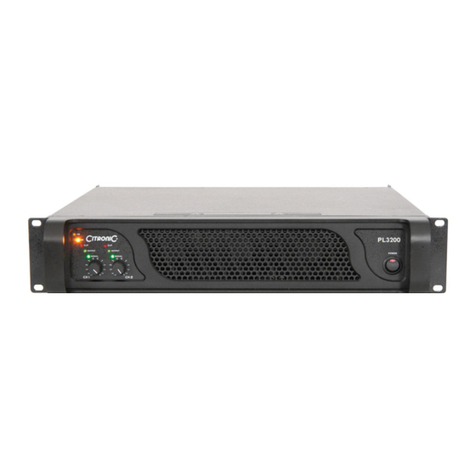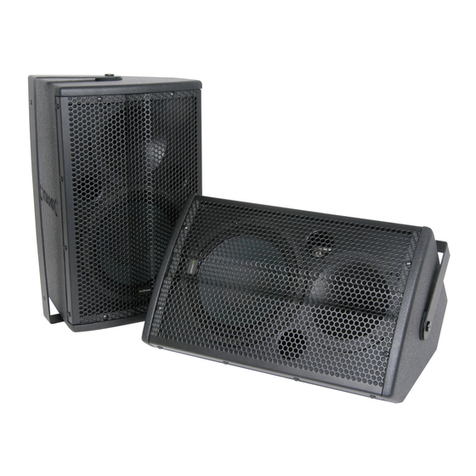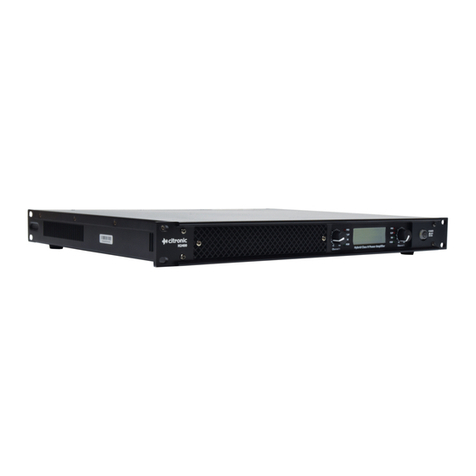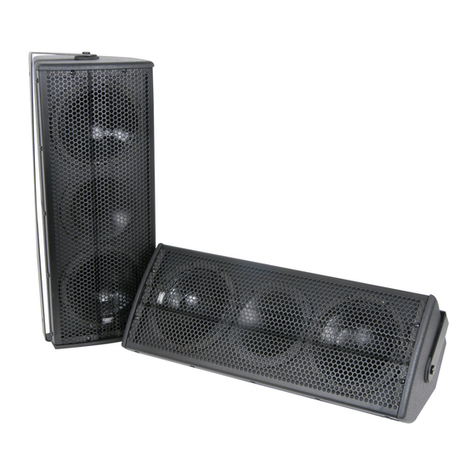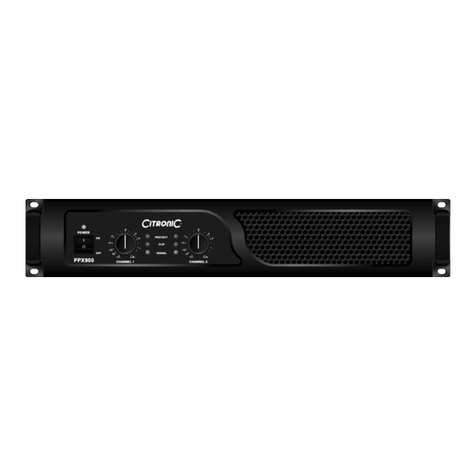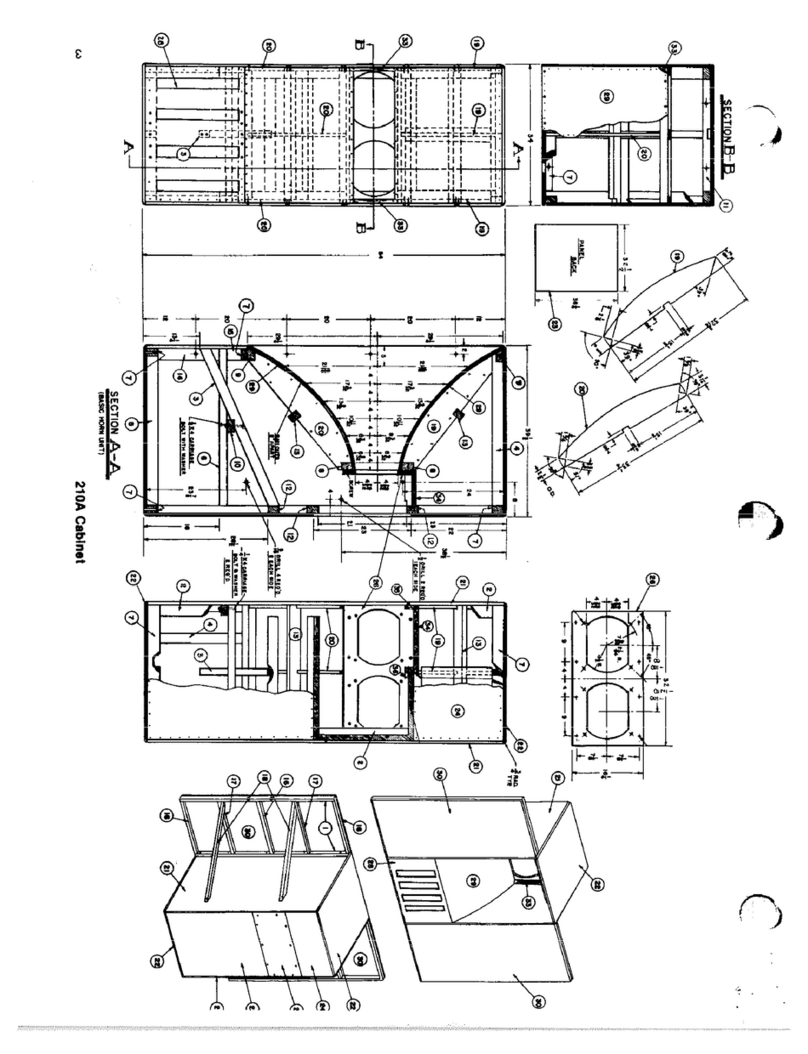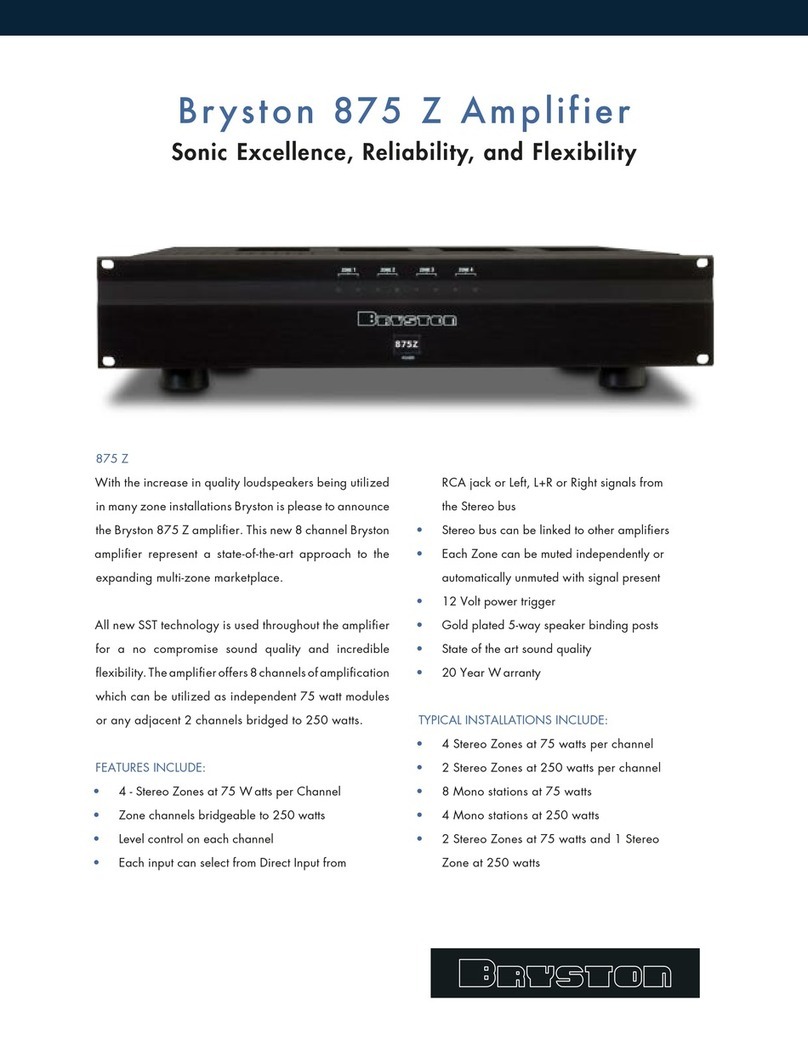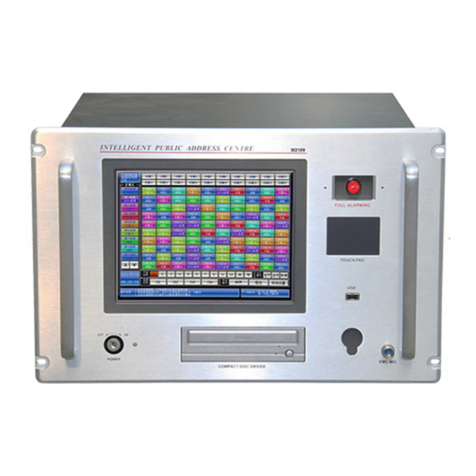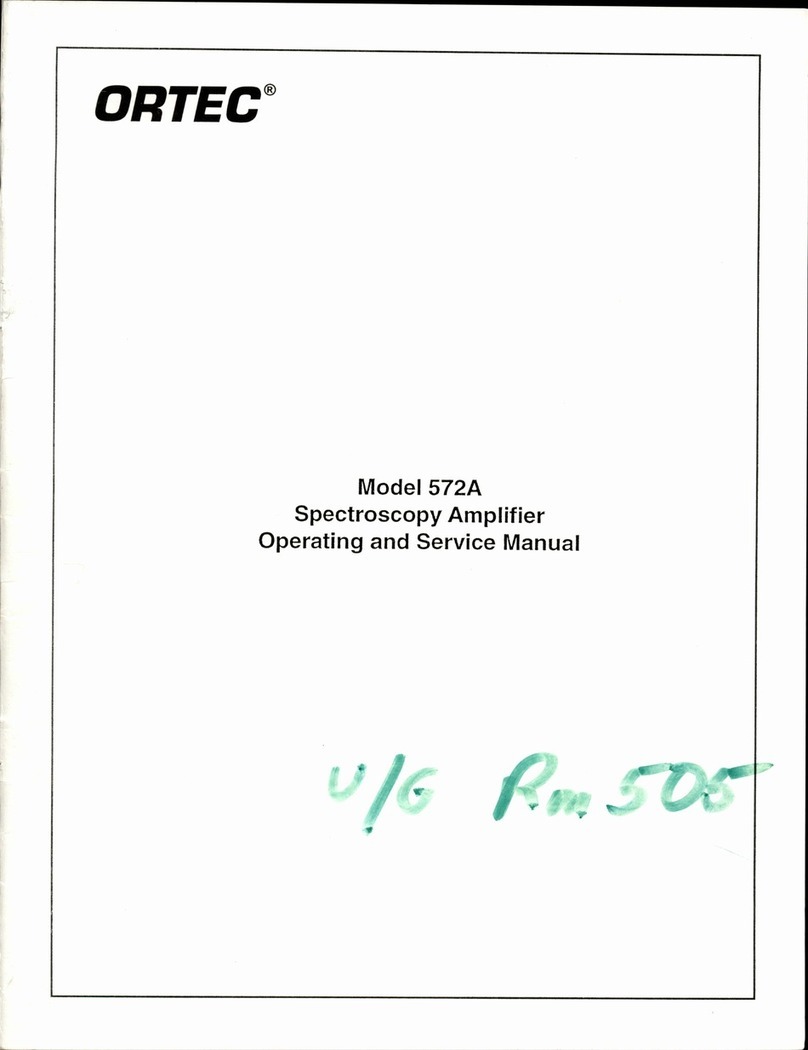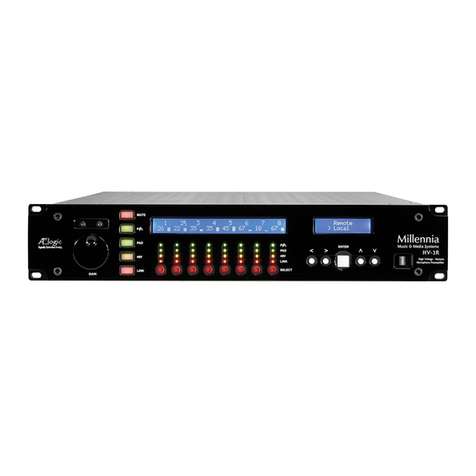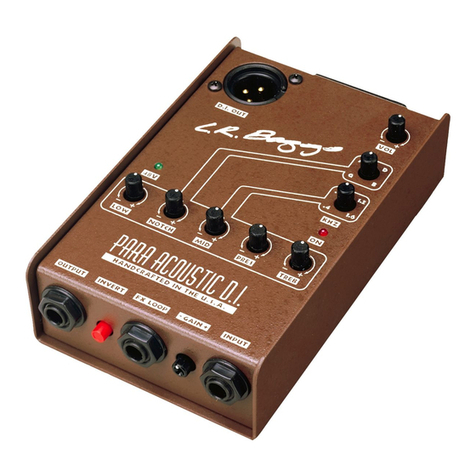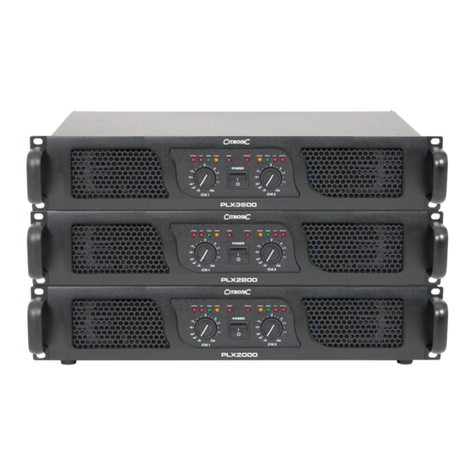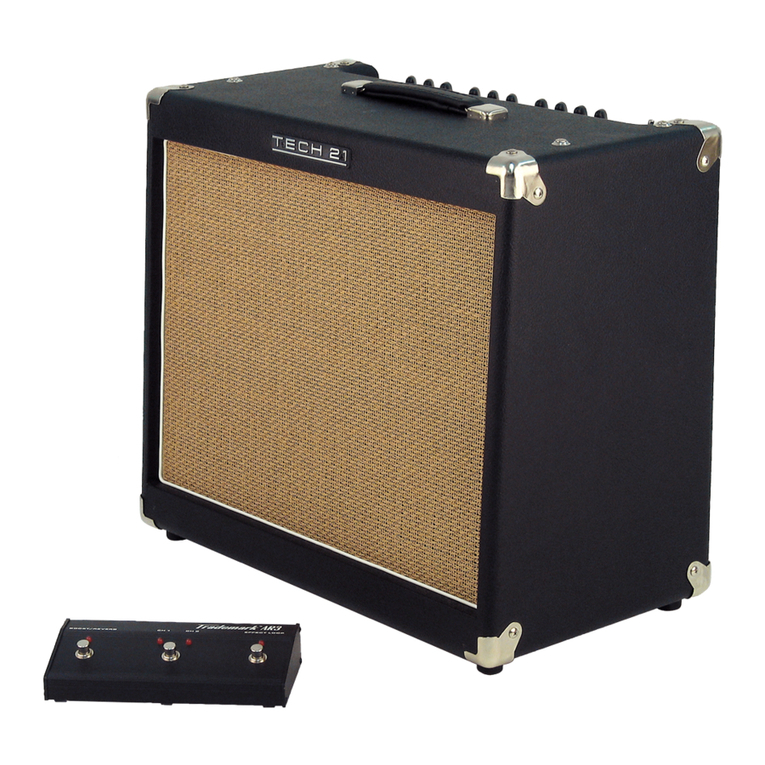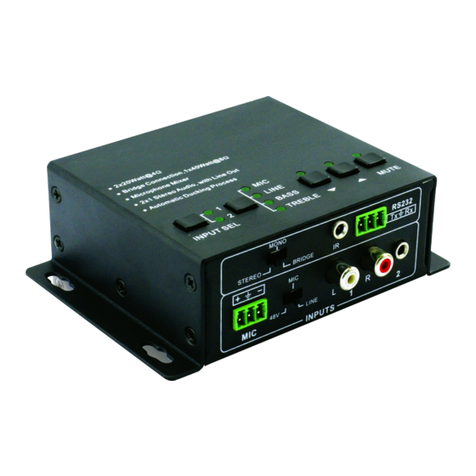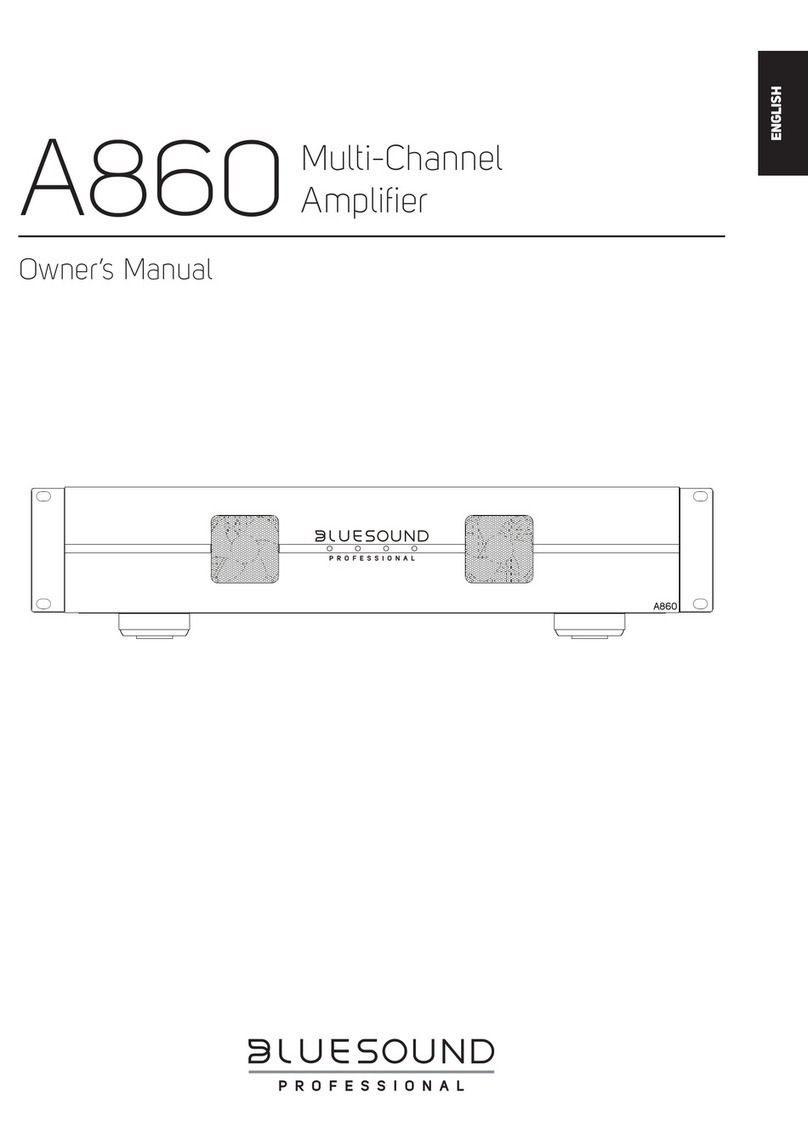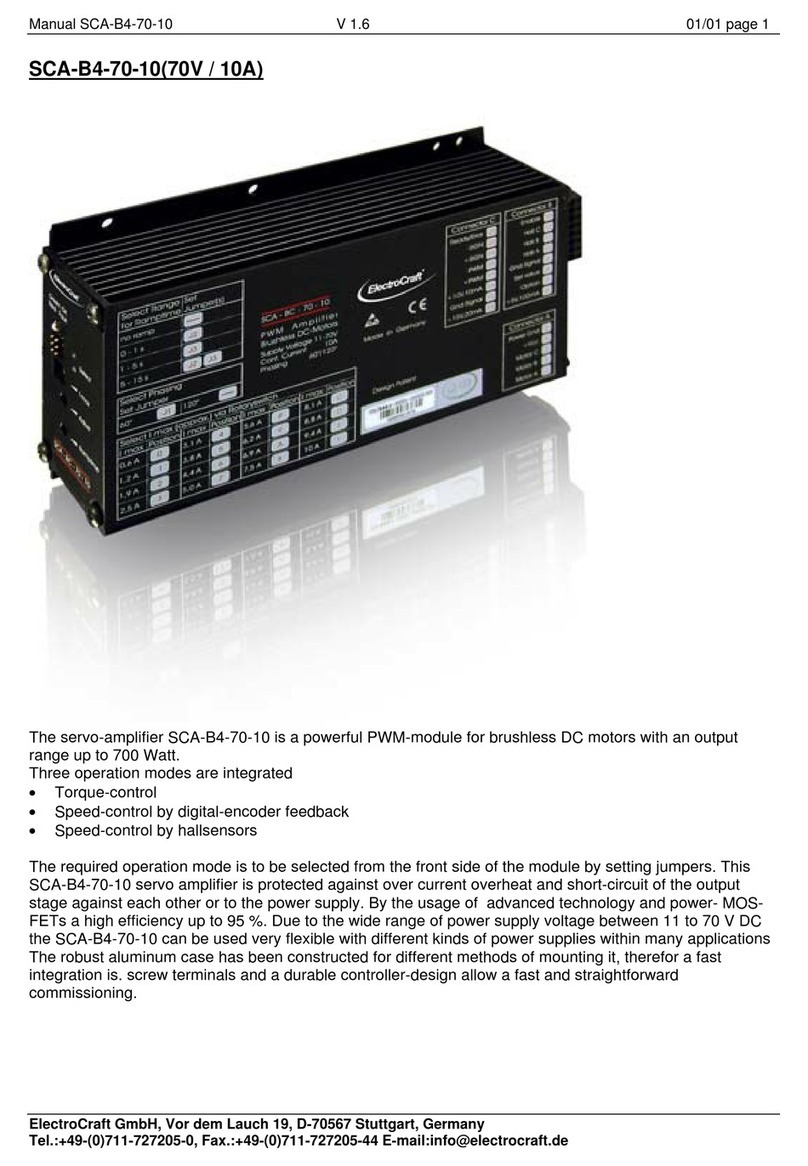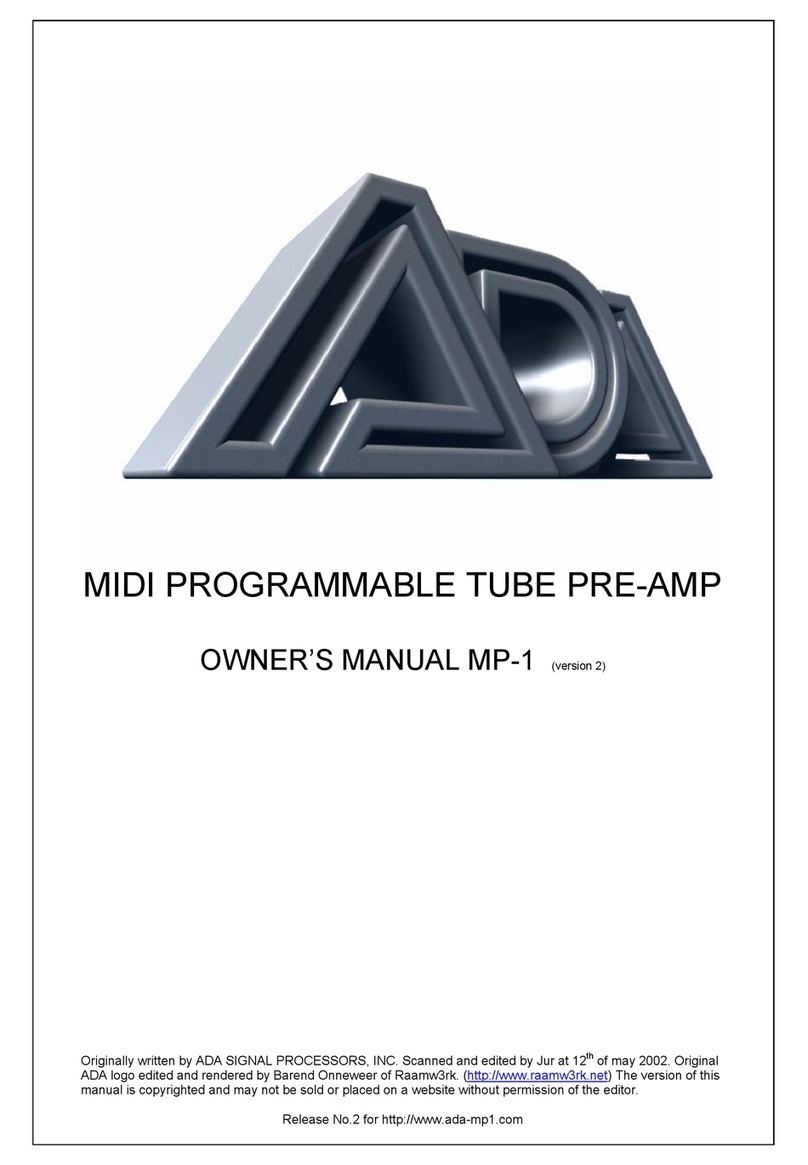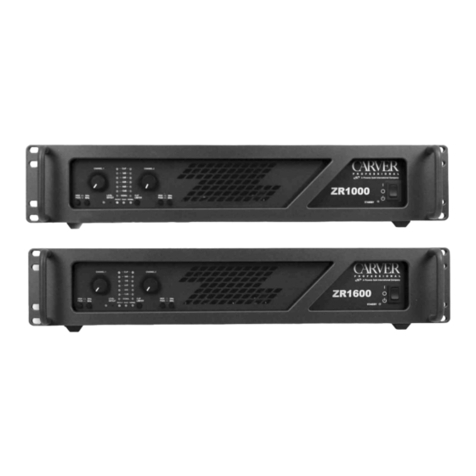
172.110UK User Manual
Operation
Connect speaker cabinets to channel outputs (18, 20) using good quality Speakon®leads.
(all speaker outputs from the D1000 are wired to pins 1+/1-)
A single 8Ω or 4Ω speaker may be connected to each channel or 2 x 8Ωspeakers connected in parallel may be connected
to either output as a 4Ωpair. WARNING –The combined load on either channel must be no lower than 4Ω.
Also ensure that the speaker cabinets can handle the power output from the amplifier based at that impedance.
The rear panel has a MODE switch (12), which determines the way that the amplifier operates, indicated by 3 LEDs on
the front panel (10). The standard operating mode is STEREO, with each input feeding its relevant speaker output.
PARALLEL mode sums both inputs together in mono so that each amplifier channel receives a mix of both inputs.
Alternatively, both channels can be combined to drive a single load at higher power by selecting BRIDGE mode. In this
mode, the input is on channel A and the output is from the BRIDGE output SPK connector (19).
WARNING –The minimum load for BRIDGE mode is 8Ω.
Above the MODE switch is a SENSITIVITY switch (11), which has 3 settings for different input levels.
The standard setting is 0.775V, with further settings for 1.00V and 1.44V - higher settings reduce the input sensitivity.
Above the CH.B Link Output XLR is a 75Hz LOW CUT filter switch (13). When active, this filter removes frequencies below
75Hz to avoid wasted power in full range cabinets that cannot reproduce these low frequencies.
Above the CH.A Link Output XLR is a GROUND switch (15) which can isolate the signal ground from mains Earth.
This can sometimes help to cure mains hum caused by Earth loop connections. If there is ‘hum’in the audio, try the LIFT
setting. The normal setting for this is GND, where both signal ground and mains Earth are connected.
Connect each signal input from mixer or other line level source to the CH.A and CH.B inputs (16) on the rear panel using
good quality signal leads. Depending on output level of the mixer, select the appropriate sensitivity on the rear panel.
Wiring for balanced or unbalanced inputs are as follows…
Pin 3 + Pin 1 combined to ground
Each channel input also has a corresponding XLR link output (14) for linking onto further amplifiers, as necessary.
XLR inputs and link outputs for each channel are wired in parallel, allowing signal to be cascaded over several amplifiers.
Connect the amplifier to a mains supply (21), ensuring the IEC lead is earthed, in good condition and connected securely.
With CH.A + CH.B controls (5, 9) turned fully down, switch on the power to the amplifier (1). The power indicator will
light (3). This unit has a “soft-start” function which makes some checks before engaging power to the amplifiers, which
may take a few seconds.
With the mixer (or other signal source) levels turned down, gradually increase the amplifier’s CH.A + CH.B controls to the
required level (normally full) and then gradually increase the signal level from the mixer or sound source until sound can
be heard through the speakers and then continue increasing up to the required level.
Each channel has LED indicators to show when the signal (6) is present and operation of the inbuilt audio limiter (8),
which engages automatically when the output reaches the peak power level to help avoid overload to the speakers.
Additional LEDs indicate operation of the internal protection circuitry for the Power supply (4) and the Audio circuitry (7)
When either of these LEDs is lit, this means that there is a fault in the system and the amplifier has shut it down to
protect itself and other connected equipment. Switch the power off and disconnect other equipment before re-checking
connections and equipment.
If the PROTECT LEDs stay lit, refer the amplifier to a qualified service engineer.
Before powering down, turn the channel gain controls fully down to avoid loud noises when powering down.


